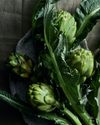
The 15th Century saw two critical European voyages: Christopher Columbus sailed to the Americas, and Vasco da Gama sailed around the tip of Africa. Both were headed for India – but only da Gama made it, arriving in what is now the coastal Indian state of Kerala. At the time, it was a major shipping hub for India’s abundant pepper crops.
The exchange of spices from Asia and India into Europe had flourished since Roman times and paved the way for important trade routes, but da Gama’s arrival in India marked the start of European powers’ mission to gain a direct foothold in the lucrative spice trade, leading to conquests and colonisation. As Yale University history professor Paul Freedman puts it: “The passion for spices underlies the beginning of the European colonial enterprise, a force that remade the demography, politics, culture, economy, and ecology of the entire globe.” And that’s how, from this problematic past, the global spice industry came to be worth some $24 billion today.
Any product so valuable is likely to attract short-cuts. The prized saffron has a long history of adulteration, and spices are still susceptible to food fraud. In 2016, CHOICE investigated oregano for sale in Australian supermarkets, revealing that most of the products tested had as little as 10% of the herb. Meanwhile, Fairtrade International flags the influence of large spice trading companies means power imbalances for spice growers and unfair wages.
This story is from the {{IssueName}} edition of {{MagazineName}}.
Start your 7-day Magzter GOLD free trial to access thousands of curated premium stories, and 9,000+ magazines and newspapers.
Already a subscriber ? Sign In
This story is from the {{IssueName}} edition of {{MagazineName}}.
Start your 7-day Magzter GOLD free trial to access thousands of curated premium stories, and 9,000+ magazines and newspapers.
Already a subscriber? Sign In

From personal experience
Former Hope St Radio chef ELLIE BOUHADANA invites you to gather your loved ones and enjoy an evening of good food and laughter with recipes from her new cookbook, Ellie's Table.

Kimberley Moulton
Kylie Kwong celebrates the individuals helping to grow a stronger community. This month, we applaud the international curator and Yorta Yorta woman who is shining a light on First Peoples.

Tom Wallace
We share a drop with the head winemaker for Devil's Corner, Tamar Ridge and Pirie Sparkling, a master of cool-climate grapes.

Best in class
The top drops to keep an eye out for on wine lists (and why they're worth the splurge)

A taste of refuge
Fleeing war and persecution, Australia's new arrivals push our food culture forward. DANI VALENT explores the contributions of the country's refugee communities.

BE OUR GUEST
Inspired by the sense of place conjured by Europe's Michelin-star restaurants, local restaurateurs are expanding their hospitality remit to include accommodation

Barcelona BUZZ
A popular drawcard for digital nomads and expats alike, the Catalonian capital offers equal parts sophistication and fun. Here, DANI VALENT discovers the latest dining hotspots.

HEATHCOTE BOUND
MICHAEL HARDEN hits the road to explore regional Victoria's Heathcote, home to this year's Best Destination Dining and a host of other delights.

The art of...relishing restaurants
Does working in hospitality make someone a better or worse diner

HEART AND SOUL
Not a vegetable but rather a flower bud that rises on a thistle, the artichoke is a complex delight. Its rewards are hard won; first you must get past the armour of petals and remove the hairy choke. Those who step up are rewarded with sweet and savoury creaminess and the elusive flavour of spring. Many of the recipes here begin with the same Provençal braise. Others call on the nuttiness of artichokes in their raw form. The results make pasta lighter and chicken brighter or can be fried to become a vessel for bold flavours all of which capture the levity of the season.